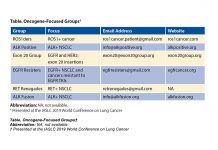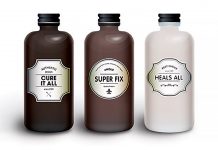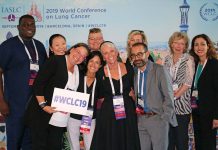By D. R. Camidge
Posted: October 2018
Between March 2017 and April 2018, nearly 20,000 new members signed up for the Lung Cancer Survivors Support Community on Inspire. At present, membership of this online community is over 90,000 individuals from more than 200 different countries. Physicians have always known that patients continue discussions with friends and relatives long after a clinic consultation has finished. However, with the global acceptance of social media, these ancillary conversations are now far more extensive than ever before. With more than 5 million words posted in this lung cancer community in 2017 alone, just what are they all talking about?

“On one level it’s about support—a community helping each other through the stresses of serious diseases such as lung cancer,” said John Novack, director of communications for Inspire. “However, it’s also about connecting patients around therapeutic opportunities, including clinical trials.”
Inspire was set up as a private company in 2005 with Brian Loew, an internet entrepreneur, as the CEO. Seeing itself as a “healthcare social network,” Inspire manages multiple different disease-specific communities, with the Lung Cancer Survivors community representing one of its largest and oldest groups. Access is free, with full-time moderator support.
“Sometimes [support consists of] just helping out on basic technology issues,” said Mr. Novack. “But it’s also to help ensure that different member perspectives in the community are equally valued and to quell potential brush fires among members as early as possible.”
A Vocal Minority
According to Mr. Novack, only approximately 20% of members of any community on Inspire create discussion topics and comment on them; the rest of the community uses the platform as a resource. Of the members who do post, some may discuss their experiences with different doctors or hospitals, which worries some patient advocates.
“If only patients with outlier experiences post, others could end up being dissuaded from entering a clinical trial,” said Marcia Horn, JD, the director of the International Cancer Advocacy Network and of the Exon20 group, both patient advocacy groups.
According to Janet Freeman-Daily, another prominent lung cancer advocate, group members will often police their own communities and encourage an individual to get a second opinion if there is a perception of inadequate care rather than criticizing the physician or center that provided the care. In addition, because the site is monitored at all times by members, moderators, and surveillance programs, any potential marketing or sales-related conversations are removed. This vigilance dissuades any potential “internet snipers” from masquerading as members in an attempt to promote or denigrate a product or institution.
Commercialization of Patient Perspective
Communities on Inspire are also directly linked to nonprofit advocacy partners, which help to promote the community and strengthen trust in the Inspire brand. Since August 2015, the American Lung Association has fufilled this role for the Lung Cancer Survivors community.
Financial support for Inspire comes from paid advertising on the webpages and through other pharmaceutical industry collaborations, such as market research activities (e.g., roundtables) or surveys.
“Participating companies may seek to understand medical conditions or treatments in more detail,” said Mr. Novack. “However, members control privacy filters for their own accounts and can easily opt out.”
Biotech analysts, investors, or pharmaceutical companies seeking competitive intelligence on ongoing clinical trials have been known on rare occasions to lurk alongside members, resulting in members feeling a violated sense of trust. Concern about this issue sparked an article in The Wall Street Journal on the risks of social media participation by patients resulting in an unblinding during ongoing trials.1 The issue continues to generate significant debate regarding the ability to restrict a patient from discussing individual experiences. Appropriately communicated positive experiences, if they are not misleading and are representative of the whole population, can accelerate breakthroughs.
H. Jack West, MD, a medical oncologist and president of an expert-moderated online patient education community, the Global Resource for Advancing Cancer Education, told the IASLC Lung Cancer News that “After the interim data on crizotinib for ALK-positive lung cancer came out, patient-to-patient discussion though social media probably helped a lot in completing accrual to the pivotal molecularly selected phase I trial.”
Equally, however, there are concerns that the early public posts of a patient with an atypical negative safety or efficacy experience in a trial could affect another patient’s willingness to enroll in the same study, thereby undermining the opportunity to definitively answer a vital clinical research question.
“This is particularly worrying when one person’s experiences can’t be put into context, either because of the details of his/her individual case or just because data on the rest of the group in the trial are lacking,” said Ms. Horn.
It has been suggested that clinical trial consent forms should start to offer guidance to trial participants on what is or is not considered acceptable regarding social media participation. Although this may not be enforceable, such guidance could inform patients about the consequences of early posting, dissuading premature discussion. Posting delays could be requested or notifications to patients about when to initiate social media discussion about specific trial treatment and outcomes or any other key trial-related information, such as overall accrual or how other patients are doing, could be provided once these data enter the public domain. Limiting posts to a defined circle of trusted social media friends, with instructions to not repost, has also been suggested. ✦
Reference:
1. Marcus AD. Researchers Fret as Social Media Lift Veil on Drug Trials. Wall Street Journal. 2014 Jul 30.











